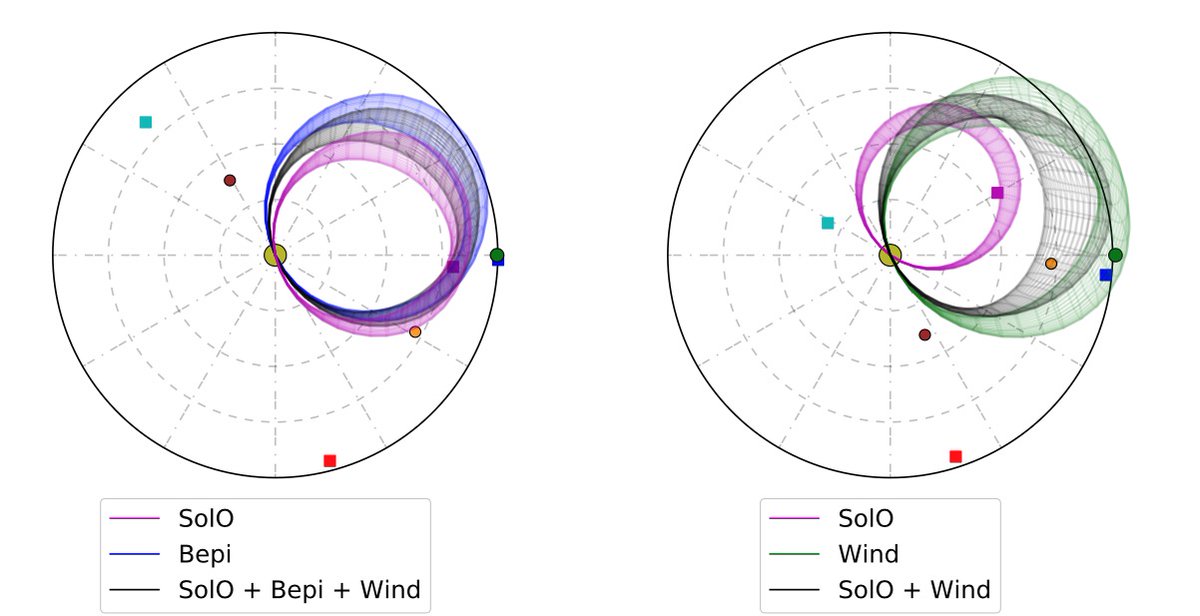
Quite unreal to announce that I got an @ERC_Research Consolidator grant for improving #spaceweather prediction! This is foremost a success by everyone in our team: Tanja/Ute Amerstorfer, Maike Bauer, Rachel Bailey, Martin Reiss, and Andreas Weiss.
Best. team. ever.
🧵 1/18 👇
Best. team. ever.
🧵 1/18 👇

A first shout-out goes to the Austrian Science Fund @FWF_at providing the funding that brought me here. My scientific career would have been completely impossible without it, and other grants by the @EU_Commission, including a Marie S. Curie fellowship.
The one year I spent with the Marie S. Curie at UC Berkeley @ucbssl and visiting @NASAJPL in Pasadena massively impacted my way of scientific thinking.
I kept working ever since with that kind of innovative spirit I picked up at these top institutions.
I kept working ever since with that kind of innovative spirit I picked up at these top institutions.
There would be no @ERC_Research funding without the leverage provided by these earlier grants.
Then, I need to deeply thank instrument teams everywhere that build and operate the amazing network of #heliophysics space missions.
Then, I need to deeply thank instrument teams everywhere that build and operate the amazing network of #heliophysics space missions.
You know who you are, and I am so massively grateful for the amazing work that you do, and that we scientists rely on to be able to figure out new stuff about the universe @IWF_oeaw @SolarOrbiterMAG @tuBraunschweig @IC_SpaceAtmos @RAL_Space_STFC @ucbssl @UNHEOS @NASASun @NWSSWPC
I have met many brilliant scientists along the way who were great teachers and collaborators. This list would be essentially endless after 18 years in #heliophysics, but I'd like to explicitly mention ...
... the absolute legends Charlie Farrugia (photo @UNHEOS in 2009) and Janet Luhmann, as well as Richard Harrison, Jackie Davies, Noé Lugaz, Paulett Liewer, Astrid Veronig, Manuela Temmer, Werner Magnes, and the late Helfried Biernat. 

There is a cracking #heliophysics and #spaceweather community on twitter @tamithaskov @erikapal @halocme @swmcintosh @mathewjowens @spaceyliz @slyardley @eelcodoornbos @SpaceWxMike @mihojanvier @SHNWx @markcheung and others.
Its so much fun to discuss solar events as they are unfolding, this was a major inspiration for me to make the move to combine basic space physics with applied research / data science / AI for real time prediction, also within this ERC project.
Twitter also introduced me to the aurora chaser community, which is hilarious to follow, e.g. @dartanner @treetanner @vincent_ledvina @cogie_s @chunder10 @dmaluk1 @NightLights_AM @theauroraguy @auroranotify @LiveAuroraNetw1
Especially given that I myself live in a geomagnetic mid-latitude country 🇦🇹 that sees the aurora once per solar cycle ...
Further, open source projects like @astropy and @SunPyProject are gamechangers when it comes to coding experiments and prototypes for space weather forecasting. A massive thank you to those building up and maintaining that code, the research community owes so much to you!
A big thanks goes to Ylva Huber and Bedanna Bapuly for providing coaching, including an opera singer who judged our zoom presence (yes, it was definitely improvable😆), and the administrative team Wolfgang Voller, Alexandra Scherr, and Claudia Grill at the @iwf_oeaw.
Now, I am aware that #academia has really big problems. Lots of bright people are currently leaving. I myself was at the brink of doing that *several* times. We need change in many areas, but for a start it should be normalized to jump from academia to industry, and back.
I try to be a role model as a leader and always improve how we respect and appreciate each other - even if that only makes a difference for the people I work with, as small as that might be in the grander scheme of things.
And with everything else going on in the world, its often hard to focus on doing space science. But I think my (admittedly sometimes almost childish) fascination for this topic - and sharing it - ....
..... can help keep me, and maybe you too, kind of afloat during trying times, so I am being relentlessly positively doing science on this account here.
Well, I guess its time to assemble The Avengers later this year to really step up the forecasting game in space, and keep doing really innovative science!
By the way, it was my 2nd submission (one ERC StG before), and 2nd interview.
• • •
Missing some Tweet in this thread? You can try to
force a refresh






